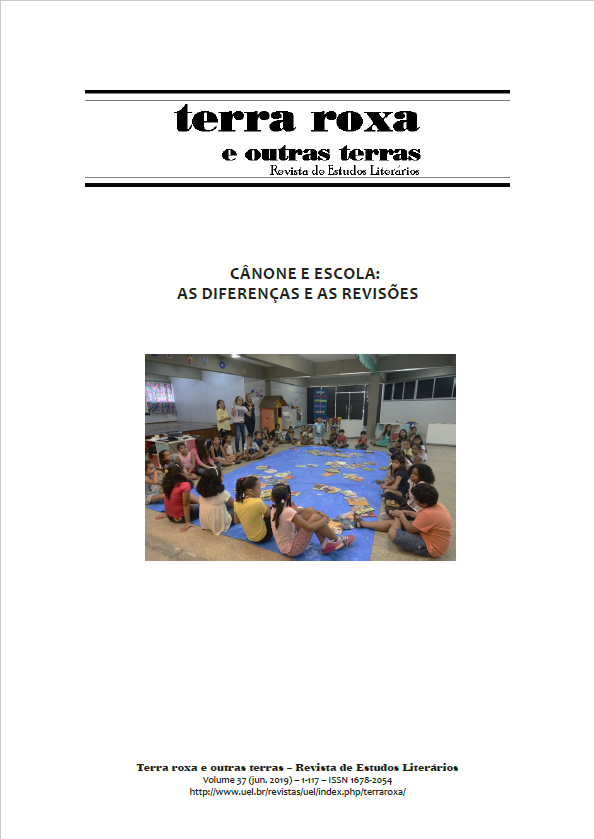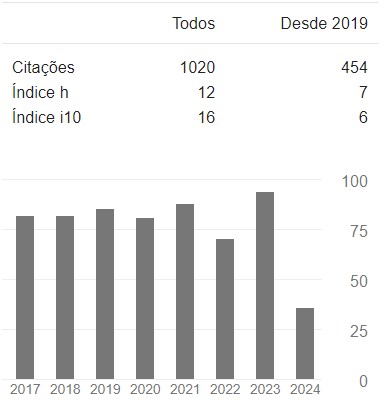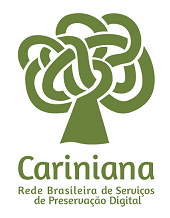Dos best-sellers da cultura de massa ao cânone literário: sequência didática como possibilidade
DOI:
https://doi.org/10.5433/1678-2054.2019v37p41Palavras-chave:
Literatura, Best-sellers, Cânone literário, Sequência didáticaResumo
Os aspectos referentes a leitura, mais especificamente à leitura literária na escola, têm se apresentado como um terreno frutífero de novas preferências. Sobre isso, percebe-se uma primazia dos estudos da literatura canônica sob outras possibilidades de leitura no ambiente escolar. Os best-sellers da cultura de massa ocupam um espaço cada vez maior nas atividades de leitura dos jovens leitores dentro e fora da escola. Em contrapartida, há uma forte imposição da literatura canônica e frustração das expectativas do leitor. Objetivamos a realização de um trabalho de aproximação entre cânone literário e best-sellers da cultura de massa, elegemos as obras Como eu era antes de você de Jojo Moyes e Lucíola de José de Alencar, com as quais construímos duas sequências didáticas. Para tanto, busca-se responder a seguinte questão: como a leitura de best-sellers pode favorecer a inserção das obras canônicas na escola e para a formação crítica do leitor? Nesse trabalho, realizou-se uma pesquisa de cunho bibliográfico pelo método hipotético dedutivo tendo como suporte teórico: Barthes (1987), Jauss (1984), Moisés (2006), Lajolo e Zilberman (2009), Cosson (2015). Assim, foi possível oferecer uma forma de trabalho com a literatura valorizando experiências de leituras.
Downloads
Referências
BARTHES, Roland. O prazer do texto. Trad. J. Guinsburg. São Paulo: Perspectiva, 1987.
BOECHAT, Maria Cecília. Paraísos artificiais: o romantismo de José de Alencar e sua recepção crítica. Belo Horizonte: Ed UFMG, 2003.
CANDIDO, Antonio. O direito a literatura. Vários escritos. São Paulo: Ouro sobre Azul, 1998, pp. 235-249.
COLOMER, Teresa. Andar entre livros: a leitura literária na escola. São Paulo: Global, 2007.
COSSON, Rildo. Letramento literário: teoria e prática. 2. ed. São Paulo: Contexto, 2015.
ISER, Wolfgang. O ato da leitura: uma teoria do efeito estético. Trad. Johannes Kretschmer. São Paulo: 34, 1996.
JAUSS. Hans Robert. A história da literatura como provocação à teoria literária. Trad. Sérgio Tellaroli. São Paulo: Ática, 1994.
LAJOLO, Marisa & Regina Zilberman. A formação da leitura no Brasil. 3. ed. São Paulo: Ática, 1996.
LIMA, Luzimar Silva de. Leitura de best-sellers: desafios à escola na formação do leitor. 2018. Universidade Estadual do Piauí, Dissertação (Mestrado Profissional em Letras).
MOISÉS, Massaud. A criação literária: prosa 1. 20. ed. São Paulo: Cultrix, 2006.
MOYES, Jojo. Como eu era antes de você. Rio de Janeiro: Intríseca, 2016.
PETIT, Michéle. Os jovens e a leitura: uma nova perspectiva. Trad. Celina Olga de Souza. São Paulo, 2008.
ROUXEL, Anne. Aspectos metodológicos do ensino da literatura. Maria Amélia Dalvi, Neide Luiza de Rezende & Rita Jover Faleiros (orgs.). Leitura de literatura na escola. São Paulo: Parábola, 2013, pp. 17-34.
SCHNEUWLY, Bernard & Joaquim Dolz. Gêneros orais e escritos na escola. Trad. Roxane Rojo e Glaís Sales Cordeiro. Campinas: Mercado de letras, 2004.
TODOROV, Tzvetan. A literatura em perigo. Trad. Caio Meira. Rio de Janeiro: DIFEL, 2009.
WELLEK, René & Austin Warren. Teoria da literatura e metodologia dos estudos literários. Trad. Luis Carlos Borges. São Paulo: Martins Fontes, 2003.
Downloads
Publicado
Como Citar
Edição
Seção
Licença
Autores que publicam nesta revista concordam com os seguintes termos:
a) Os(as) autores(as) mantêm os direitos autorais e concedem à revista o direito de primeira publicação, sendo o trabalho simultaneamente licenciado sob a Creative Commons Attribution International 4.0 License, permitido o compartilhamento do trabalho com reconhecimento da autoria do trabalho e publicação inicial nesta revista.
b) Os(as) autores(as) têm autorização para assumir contratos adicionais separadamente, para distribuição não-exclusiva da versão do trabalho publicada nesta revista (ex.: publicar em repositório institucional ou como capítulo de livro), com reconhecimento de autoria e publicação inicial nesta revista.
c) Autores têm permissão e são estimulados a publicar e distribuir seu trabalho em linha (ex.: em repositórios institucionais ou na sua página pessoal) após o processo editorial, já que isso pode gerar alterações produtivas, bem como aumentar o impacto e a citação do trabalho publicado (Veja O Efeito do Acesso Livre).
d) Os(as) autores(as) dos trabalhos aprovados autorizam a revista a, após a publicação, ceder seu conteúdo para reprodução em indexadores de conteúdo, bibliotecas virtuais e similares.
e) Os(as) autores(as) assumem que os textos submetidos à publicação são de sua criação original, responsabilizando-se inteiramente por seu conteúdo em caso de eventual impugnação por parte de terceiros.



















